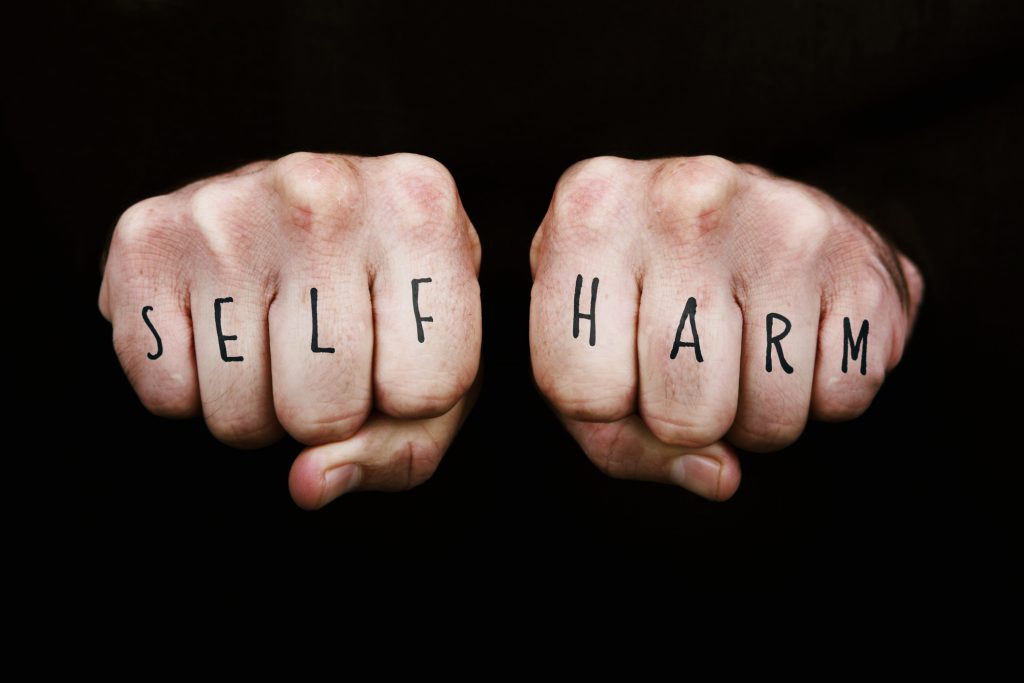
March is recognized as Self-Injury Awareness month, so we are breaking down common misconceptions and stereotypes surrounding self-harm – specifically non-suicidal self-injury (NSSI). Self-harm, also known as self-injury, is not a mental illness. Rather, it’s an unhealthy coping mechanism to deal with negative and painful emotions and/or stressful situations.
Many people who are struggling with self-injury say that they are unable to express their feelings, feel numb or empty inside, or are struggling with a situation that they feel they cannot handle. We hope that by uncovering these misconceptions, the stigma will decrease and people will have a better understanding of self-harm. Here are the 6 myths about non-suicidal self-injury:
This is one of the most commonly-held misconceptions about self-harm. Self-injury is a very personal and private matter to the person. Rather than seeking attention, the individual will try their best to hide the fact that they are hurting themselves. They may try to cover up their injuries or scars by wearing long sleeves and long pants in hot weather. As mentioned earlier, people who self-harm are trying to relieve themselves of the emotional pain. The physical pain temporarily takes away the emotional pain.
Cutting is one common method of self-harm, but there are many other forms like:
Anything done to the body with the intention of hurting it is considered self-harm. These are signs that the person is in emotional distress and needs help.
Self-harm is usually not a suicide attempt because they don’t have the intent to die. People who self-harm are trying to cope with the intense emotional pain they are feeling – or they want to feel something rather than being numb. However, research has shown that prolonged self-injury could lead to suicidal thoughts, which is why it is so important to take self-harm seriously.
Some people may be able to stop on their own, but in most cases, it becomes a self-destructive cycle or addiction that is hard to escape from. When people harms themselves, they tend to feel guilt and shame, which could lead them to feel even more negative feelings. These feelings could then cause the person to hurt themselves again. This creates a detrimental cycle or habit that is very difficult to break. It is very important to seek help from a medical professional for recovery because of this cycle.
There are many different treatments to help someone recover from self-harm. The first step is for the individual to talk to a medical professional and/or psychiatrist to determine what is causing them to harm themselves. Once the cause is identified, the person can be treated in a way that is specific to their needs and unique situation.
There are various behavior therapies that can be helpful, like cognitive behavioral therapy and psychodynamic therapy. Also, a psychologist may help the person learn and develop new coping mechanisms to overcome the intense emotions and/or stressful situations in a healthier way. Medication is also a way for the person to deal with the difficult emotions. Additionally, joining a support group can be helpful for the individual for encouragement and being understood by other people facing similar struggles.
Whether it’s a close friend, family member, or child – there are ways to help them out. Listen to them without judgment. While you listen it’s important to stay calm, caring, and compassionate. Be as understanding and supportive as possible, even though you may not fully understand why they are harming themselves. By reacting with panic or aggressiveness, the person may become more inclined to hurt themselves again. Last but not least – don’t give up! By showing your full support to your friend, family member, or child they will be able to recover.